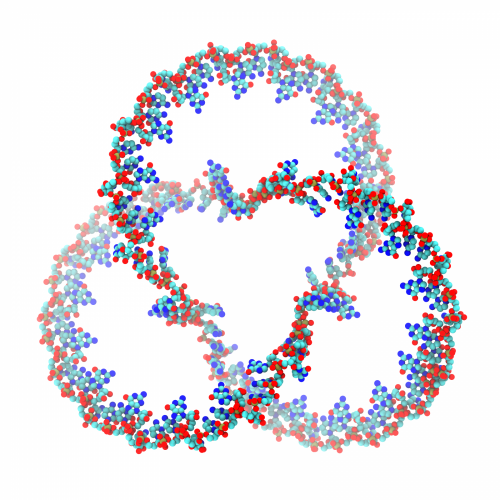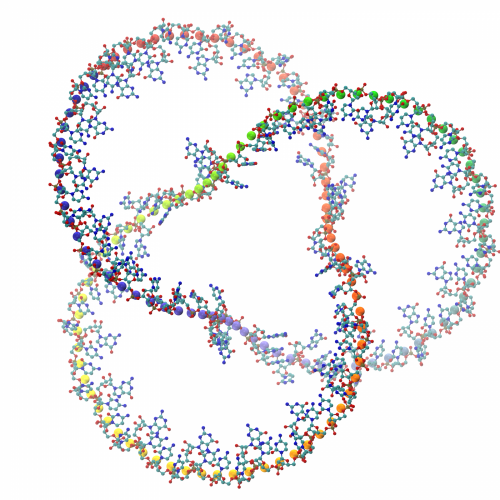No knots in known RNA structures

It had never been verified before: unlike other biopolymers, RNA, the long strand that is 'cousin' to DNA, tends not to form knots. The observation has been published in the journal PNAS by a research team of the International School for Advanced Studies of Trieste and the CEA of Saclay.
No one had checked before, but RNA, the nucleic acid involved in many cell functions including protein synthesis, appears to be the only "strand of life" not to have knots.
Over the years, advances in structural biology have firmly established that both proteins and DNA, although subject to evolutionary selection, do not escape the statistical law whereby a sufficiently long and compacted molecular strand will inevitably be entangled. However, no one to date had looked into the case of RNA.
Using the structural description provided for approximately 6,000 RNA chains entered in the Protein Data Bank, a public database that allows scientists to share information about the structure of proteins, DNA and RNA, Cristian Micheletti and Marco Di Stefano from SISSA, and Henri Orland from CEA in Saclay set out on a search for knots.
"We expected this long flexible molecule to behave like the others - DNA and proteins - forming knots with a certain frequency", explains Micheletti. "Instead we were in for a surprise: out of 6,000 known structures only three cases showed 'suspected' knots".
Suspected, because the three cases could in fact be artefacts. "The database contains multiple descriptions of the same molecule entered by separate research groups using different experimental techniques with varying resolution. Comparing the alternative descriptions of our 'knotted RNA' candidates we found no instances of knots. That the three cases may be artefacts is further confirmed by the fact that in all three instances the alternative, unknotted, descriptions were based on the most accurate technique, i.e., x-ray crystallography".

Naturally occurring RNA is therefore a type of molecule that tends to take on particularly simple geometric configurations. "Computer predictions demonstrate that if we were to re-arrange naturally occurring RNA sequences randomly we would obtain far more entangled and complex structures", explains Micheletti. "The underlying reasons for this disarming simplicity are probably manifold", continues Di Stefano. "It is plausible that the chemical composition of naturally occurring RNAs evolved to ensure reliable and rapid folding into simple, faithfully reproducible forms allowing smooth processing by the molecular machinery that decodes them to synthesise proteins. Any knots would negatively influence the process". Now further investigations are needed to better understand the anti-knot properties of RNA.
More information: Absence of knots in known RNA structures, PNAS, www.pnas.org/cgi/doi/10.1073/pnas.1418445112
Journal information: Proceedings of the National Academy of Sciences
Provided by International School of Advanced Studies (SISSA)




















